Editor’s Note: The spike in heroin use in Central New York is more than a topic for writer Amanda Seef to cover. She’s also an EMT who responds when overdoses are reported.
Underneath a mattress in the upstairs bedroom of her neat home in Liverpool lies a problem Barb Stone was hoping she wouldn’t have to face: discarded needles, plastic bags and a sign of trouble for her 19-year-old son.
It started as it has for many others in Central New York: a teenager in the suburbs, finding access to prescription narcotics. A bottle of prescription painkillers from a medical procedure turned up empty.
“I knew then that it was him,” she said. “But I didn’t think it was going to escalate.”
Stone’s daughter noticed it first – the pills turned to heroin use.
“At first, I didn’t want to believe it,” she said. “I didn’t know heroin was out here (in the suburbs).”
In the two years since, Stone has been fighting an uphill battle against heroin and the hell that accompanies it.
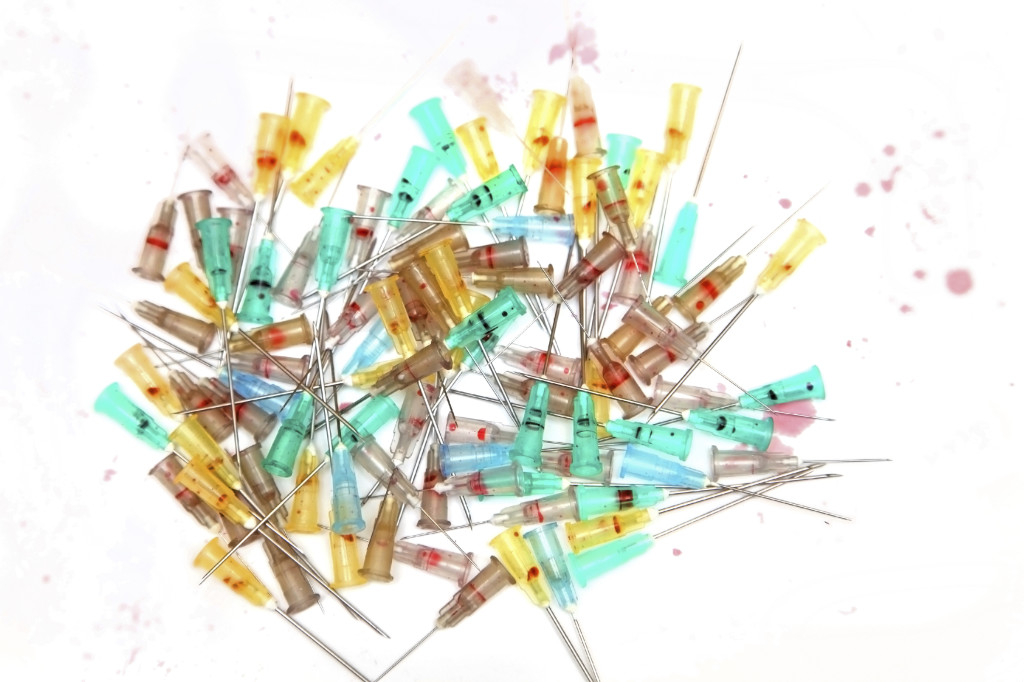
“It’s discouraging,” she said. “I’m in tears, because this is a problem that you just can’t stop.”
A month ago, she found the stash of hypodermic needles beneath his bed. She disposed of them, as she has with other paraphernalia she found. Room searches are a part of her normal life, a life that she says can’t be normal when you’re trying to help an addict. As a mother of six, she quit her job to help her son. She and her boyfriend have placed security cameras around the home to help keep drugs and other users out. Last year, she caught the teen stealing electronics from the home, presumably to sell for drugs. That night, she had him arrested in hopes of court-ordered rehab. Like many times before, and many times since, Stone told her middle son to find a new place to live.
“What are you supposed to do? You can’t give up on your kid,” she said. “But I was at my breaking point.”
She’s taken him to detox programs across the state, seeking in-patient care. Some programs say he’s not sick enough and can’t admit him. When denied by one program, the rejection was enough that the teen came home and used the opiate again that night. Out-patient programs and support groups locally have helped push the 19-year-old into periods of sobriety. He wants to quit, she says.
“I believe he truly does want to stop,” she said. “He’s been straight for a couple weeks now. But I don’t think he knows he can’t stop heroin without help.”
A GROWING PROBLEM
Police officials say there’s a glut of heroin in Onondaga County. The drug is ensnaring unsuspecting communities and taking a stronghold on youth. Use of the drug, once rarely seen, has skyrocketed across the region, sending dozens to the hospital.
The city of Syracuse is the breeding ground for dealers, bringing in buyers from across the region. On any given night, police see cars drive in and out of drug-ridden areas, many of the buyers from communities where drugs haven’t traditionally been as prevalent.
“Most of the people buying this drug are from outside of the city,” said Syracuse Police Lt. Daniel Belgrader. “They’re all ethnicities. They’re all ages. It’s all over the board, male and female, probably from (age) 20 right up to 50s and 60s.”
He says the drug market has evolved in recent years, allowing easier access. Many drug deals used to be behind closed doors, he says, but some areas of the city, such as the Near West Side, have become “like an open air drug market.” Dealers peddle many types of drugs from one location or on their own person. In one block of the city, there’s a chance users can find it all: marijuana, crack, cocaine, meth, spike. But recently, it all keeps coming back to one: heroin.
Five years ago, Syracuse police executed heroin search warrants two or three times a year; it wasn’t a common drug to see. Last year, more than 50 percent of the city’s search warrants were to find the drug.
In 2012 in Syracuse, 275 grams of heroin – almost 10 ounces – was confiscated. In 2013, that number skyrocketed to the recovery of more than 1,500 grams, about 3¼ pounds, a 445 percent increase. Police say they’re on track to surpass that in 2014, by far.
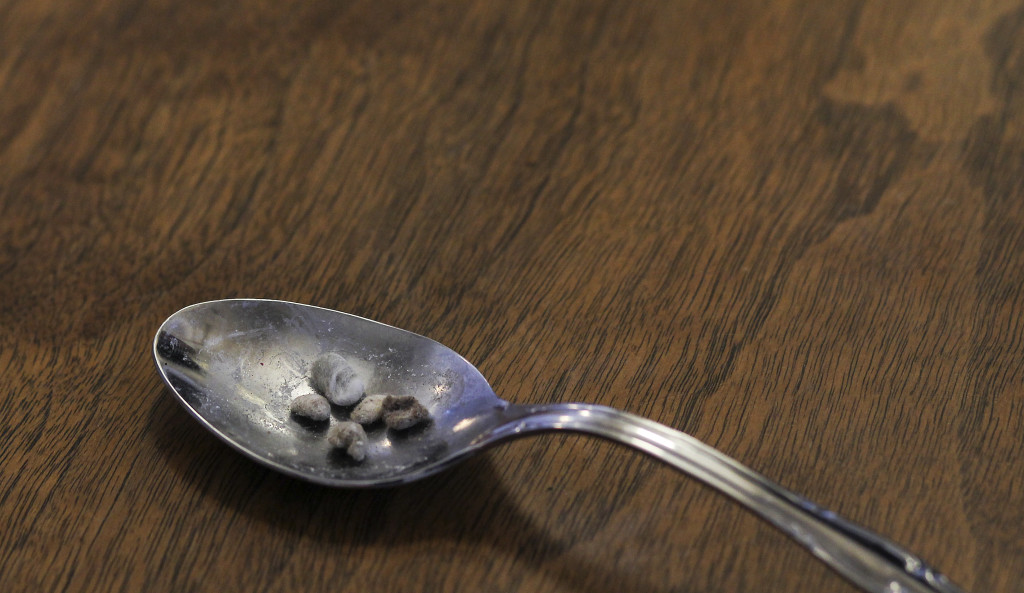
Police are seeing a resurgence of powder cocaine, as well. Users are mixing heroin and cocaine to better their high, an action known as “powerballing” or doing a “speedball.” The stimulant effects of cocaine are supposed to ward off the depressant effects of heroin, appealing to drug users, police say.
The global drug market is playing into the availability in Syracuse. Smugglers have used established cocaine smuggling routes, bringing more and more heroin into the country. And the routes are established to bring drugs into smaller cities, such as Syracuse.
The first heroin was seen in the country in the 1970s, with a purity level of 6 percent to 10 percent. Now that it’s having a resurgence, the purity of the heroin is significantly higher, making for more users, more addictions and more deals for the drug.
“Heroin is one of the scariest drugs of them all. They don’t care that it’s dangerous, they don’t care what they’re doing to themselves,” said Sgt. Scott Smith, of the Onondaga County Sheriff’s Office. “When it’s heroin, their body needs it no matter what their brain is saying.”
POPPING PILLS
Police and medical officials warn the heroin problem, as in the case of Stone’s son, might not start with heroin. They say prescription painkillers might feed it.
Heroin comes from the opiate family, made from the opium poppy – the same plant used to create prescription medications like morphine, oxycodone and codeine. Young adults and teens use prescription pills at an alarming rate, said Dr. Dorothy Lennon, the medical director at Tully Hill, a chemical dependency treatment center.
“The kids get started by using pills they’re getting out of their parents’ cabinets or their neighbors’ homes,” she said.
They may start buying the pills to support their habit once other sources run dry.
“The kids get hooked on pills, but after a while, the pills don’t do the same thing,” Smith said. “Then they start snorting pills, then they build up tolerance to that. Then they go to heroin, because it’s cheap and if you snort or shoot up some heroin … it does the trick like THAT.”
Once lawmakers realized the dangers of painkiller abuse, they restricted when and to whom doctors can prescribe the medications. As the regulations took hold, availability of the pills took a dive, increasing the prices. One pill could cost between $10 and $100.
Painkillers are on the decline among young adults 18 to 25, according to the National Survey of Drug Use and Health. Heroin, however, continues to see sharp increases in use.
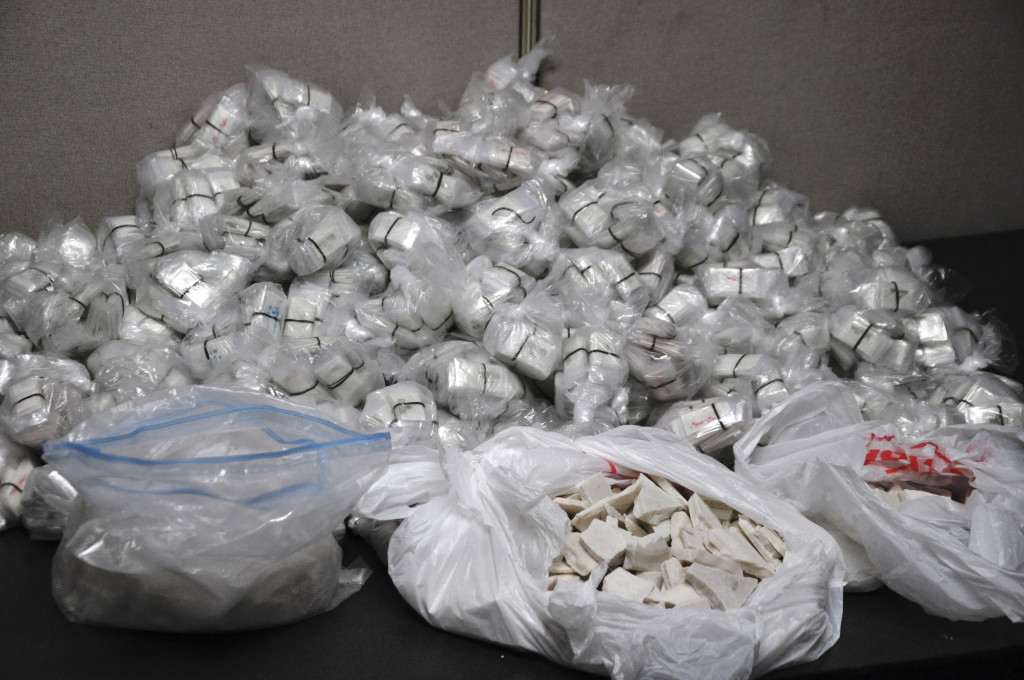
The going rate for heroin is about $10 per bag, which holds about 0.03 grams, police say. One-third of a gram of heroin, or about 10 bags, is enough for an addict for a day, whereas one pill isn’t going to make for a very long high. Addicts are likely to use multiple bags a day, depending on how long they’ve been using.
“People are using heroin every day, seven days a week, three or four times a day,” Smith said.
LETHAL AMOUNTS
One hit of heroin may be enough for a buzz, but the next hit might prove to be fatal.
“It’s like Russian roulette – you never know what you’re going to get,” Smith said.
The Sheriff’s Department, along with local emergency medical services providers, are seeing the consequential rise in overdoses in the past four to five years.
“We have people who got the same amount, same price, from the same dealer over a period of months, and now suddenly they had a near-fatal overdose because the purity has fluctuated and even the dealer wasn’t aware of it,” said Daniel Taylor, public relations officer and medic at WAVES Ambulance, in Camillus.
Taylor says overdoses suppress the respiratory system, causing the drug users to stop breathing.
“Very often what we’re seeing is someone who is unconscious, either in respiratory and/or cardiac arrest or very close to one of those,” he said. “When we start treating the patient, they are typically pale, sometimes blue. We may need to start breathing for them immediately. Sometimes their heart has stopped. At that point, we have very limited amount of time to do a number of interventions to reverse a patient’s overdose.”
It’s then that emergency medical providers can push Narcan, an opiate antagonist developed in the 1960s. The drug counters the effects of opiates, particularly respiratory suppression and lethal drops in blood pressure. Where they were blue and essentially lifeless minutes before, Narcan can bring them back to a conscious, alert state.
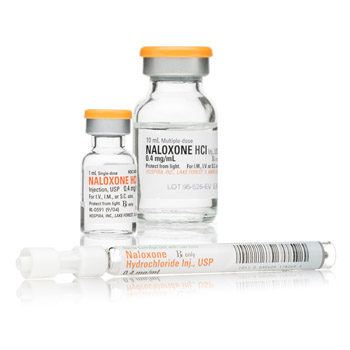
“But sometimes they’re violent,” Taylor said. “They may know what happened, and we just ruined a very expensive high for them.”
Narcan has been carried by advanced life support ambulances for decades, used regularly via IV by paramedics in suspected opiate overdoses. Recently, fire departments that operate at a BLS level, or basic life support, were allowed to begin carrying Narcan by the region’s EMS protocols. Fire departments routinely go to medical emergencies with EMTs and first responders to help patients immediately and to assist the ambulance on-scene. EMTs are now able to give Narcan through the nasal cavity, or intra-nasally. Solvay Fire Department, a volunteer BLS agency, has begun teaching its members to use Narcan, putting their use of the drug in place in May.
“It’s a benign drug,” said firefighter Brendan Hind, the EMS coordinator of the Solvay Fire Department. “In the way that we’re using it, it’s relatively low-risk, except for the reaction of the patient, in case they become very upset or violent.”
Previously, the firefighters would be able to breathe for the patient until the ambulance arrived but couldn’t assist in reversing the overdose systemically.
“We can be there in two or three minutes after someone’s call for help,” said. “This gives us the ability to administer Narcan safely to counteract the effects. It could be minutes, if not longer, until the ambulance is there, and we can have the patient effectively breathing on their own upon the ambulance’s arrival.”
Other local fire departments, including Syracuse firefighters, carry Narcan, as well.
The drug is also being given to users and their families. Stone says she and her son both have an emergency Narcan kit. She received her training for the drug in May.
“I have to have it,” she said. “I have to have it in case I have to save his life. He could die. He’s putting a needle in his arm, he’s injecting heroin, and he could die.”
She says she frequently checks to see if her son is still breathing while sleeping. If he’s not breathing, she says, she’s ready to administer the Narcan.
When respiratory or cardiac arrest can be stopped or reversed, users have a good chance of recovery. But Smith says most will continue to use heroin, until the next overdose.
“The frustrating thing is it doesn’t just end with a trip to the hospital,” he said. “I don’t think an overdose typically stops anyone, unless it kills them.”
Many users who are taken to the hospital by ambulance after an overdose leave the emergency department against medical advice.
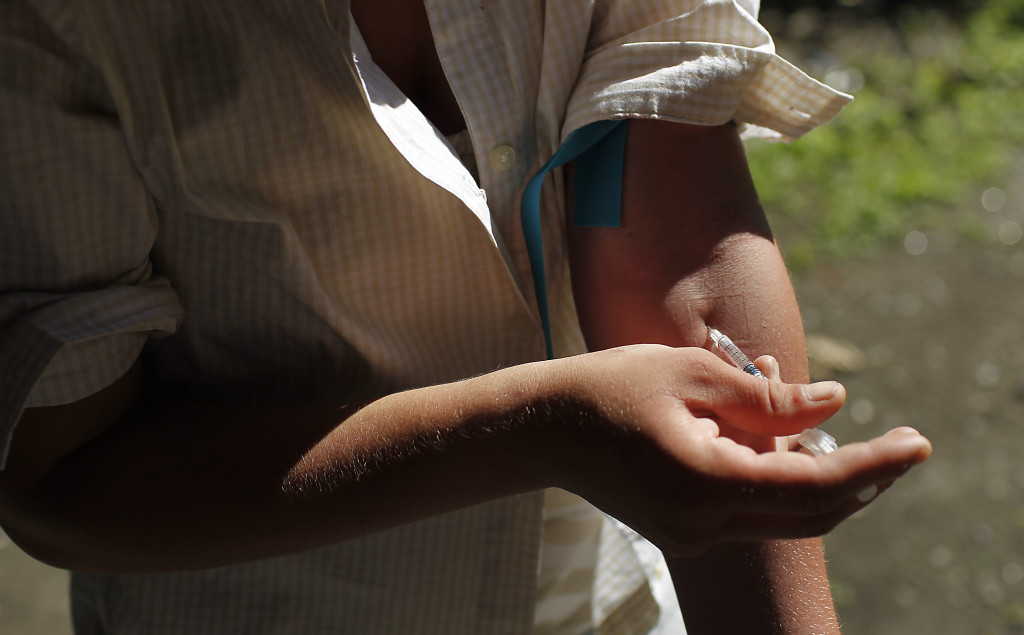
Those who are caught during an overdose, or those who call 911 for a friend who may have overdosed, now have legal immunity as part of the Good Samaritan laws. Those laws are the same that were used when Bon Jovi’s daughter overdosed on heroin at Hamilton College, in Oneida County. Prosecutors dropped all possession charges against her and a friend, due to the Good Samaritan law.
“Before, people wouldn’t have called. But we’re seeing more ODs now because people are calling,” Smith said.
For many, that 911 call could be the difference between life or death.
GETTING TREATMENT
More people using has led to a boom in treatment for opioids.
“There’s more of a demand for services than there is the availability of services,” said Mark Raymond, the clinical supervisor for the opioid treatment center at Crouse Hospital. “There’s a low percent who just discontinue use and move on with their life.”
Crouse is the only center in the area to use methadone to treat the addiction.
The medication occupies opiate receptors, to block withdrawal and craving sensations. It’s a highly regulated medication, with those who are being treated coming to the clinic every day.
Other doctors prescribe suboxone, a drug that works in a different way to treat addiction. There’s a special license to treat patients with suboxone, with specific regulations. Doctors can treat only a limited number of patients under their license each year with the medication. Because of this, and the influx of those needing treatment, doctors are constantly seeking new providers.
“We’re always searching to find physicians in the area that have the availability to take on more heroin-addicted patients,” Lennon said.
Heroin users are also highly vulnerable to relapse, Raymond said. That’s why treatment – whatever method a user chooses – is so necessary, he said.
“When you see someone completely turn their life around through therapy, it’s amazing,” he said.
SAVE LIVES, OR ENABLE DRUG ABUSE?
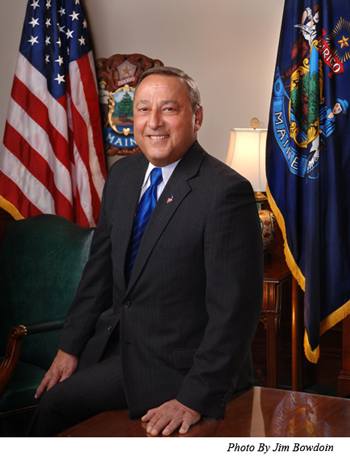
Photo from www.maine.gov
Use of naloxone hydrochloride – an opiate overdose reversal medication known by its brand name, Narcan – raised political issues earlier this year in Maine.
The drug is known to save lives, but Gov. Paul LePage fought a bill to provide Narcan to more first responders and to relatives of addicts. He vetoed a similar bill a year earlier.
“This bill would make it easier for those with substance abuse problems to push themselves to the edge, or beyond,” LePage said in his veto letter. “It provides a false sense of security that abusers are somehow safe from overdose if they have a prescription nearby.”
So, he was OK with the alternative, letting them die?
In 2012, there were 163 deaths from opiate overdose in Maine, according to the state’s Attorney General’s Office. That’s about the same number that died in traffic accidents in the state that year. The bill had overwhelming support from health care organizations, including the Maine Medical Association.
“We do not believe having naloxone around the state is going to increase heroin use,” said Gordon Smith, executive vice president of the association. “What it will do is save lives and help get people into treatment so they can be law-abiding and productive citizens.”
“Dead people can’t get clean,” said Neil Fishman, of Maine, whose father worked on the team that created the drug in the 1960s and whose stepbrother died of a heroin overdose 10 years ago.
The Huffington Post website, reported on the controversy under the headline, “GOV TO ADDICTS: DROP DEAD.”
New Jersey Gov. Chris Christie also opposed increasing access to Narcan, but he later reversed his position.
At a hearing, a representative of LePage’s Department of Health and Human Services, Nick Adolphson, said among the administration’s concerns was the cost of the bill’s provision that would require Medicaid reimbursement.
But Henry “Skip” Gates testified that $22, the cost of a dose, would have been worth spending by Maine to save the life of his son, who died of a heroin overdose in 2009.
The bill was amended in the Maine state senate, and LaPage let it pass into law … without his signature.
SIGNS PARENTS CAN LOOK FOR
Physically, users will likely have injection sites.
There might be a change in trends, for example, in a teen’s grades in school.
They may ask for more money.
There may be a change in behavior, such as hanging out with different people.
There may be paraphernalia left around the home.
Items may go missing from the home, being sold to purchase heroin.
Moods may change, going from happy to suddenly angry or moody or sullen.
— Source: Dr. Dorothy Lennon, Tully Hill Chemical Dependency Center


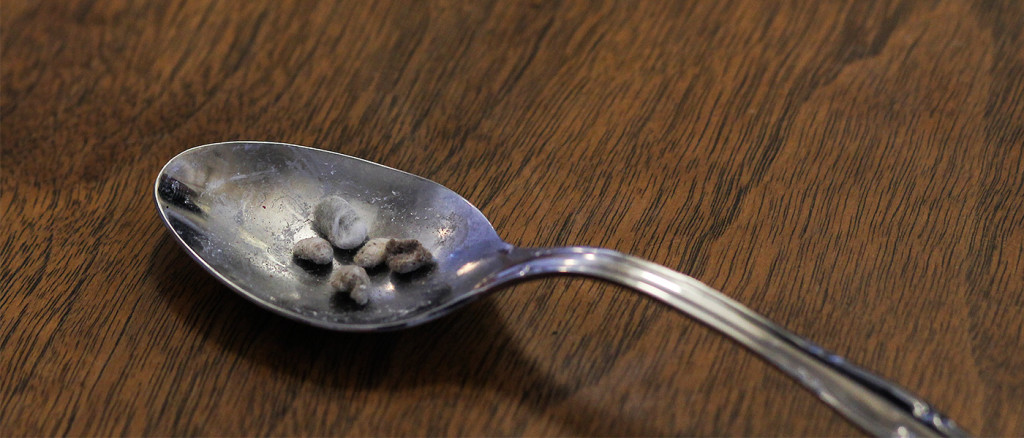
![DrugsPills[1]](http://syracusenewtimes.com/wp-content/uploads/2014/06/DrugsPills11-1024x735.jpg)